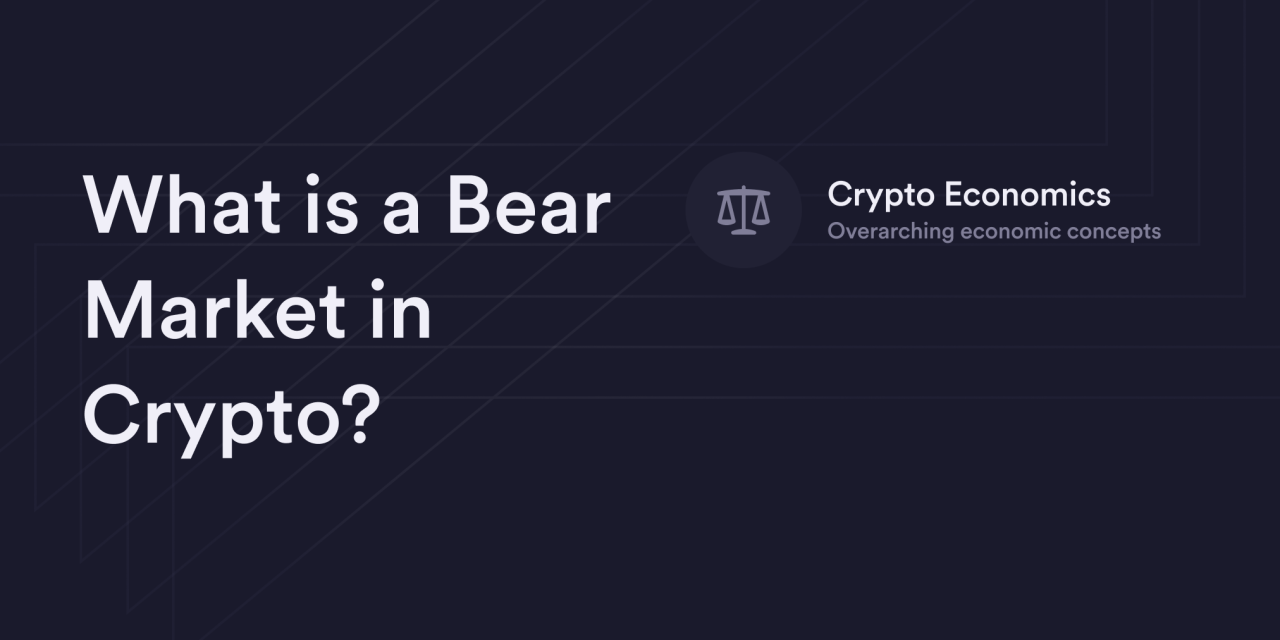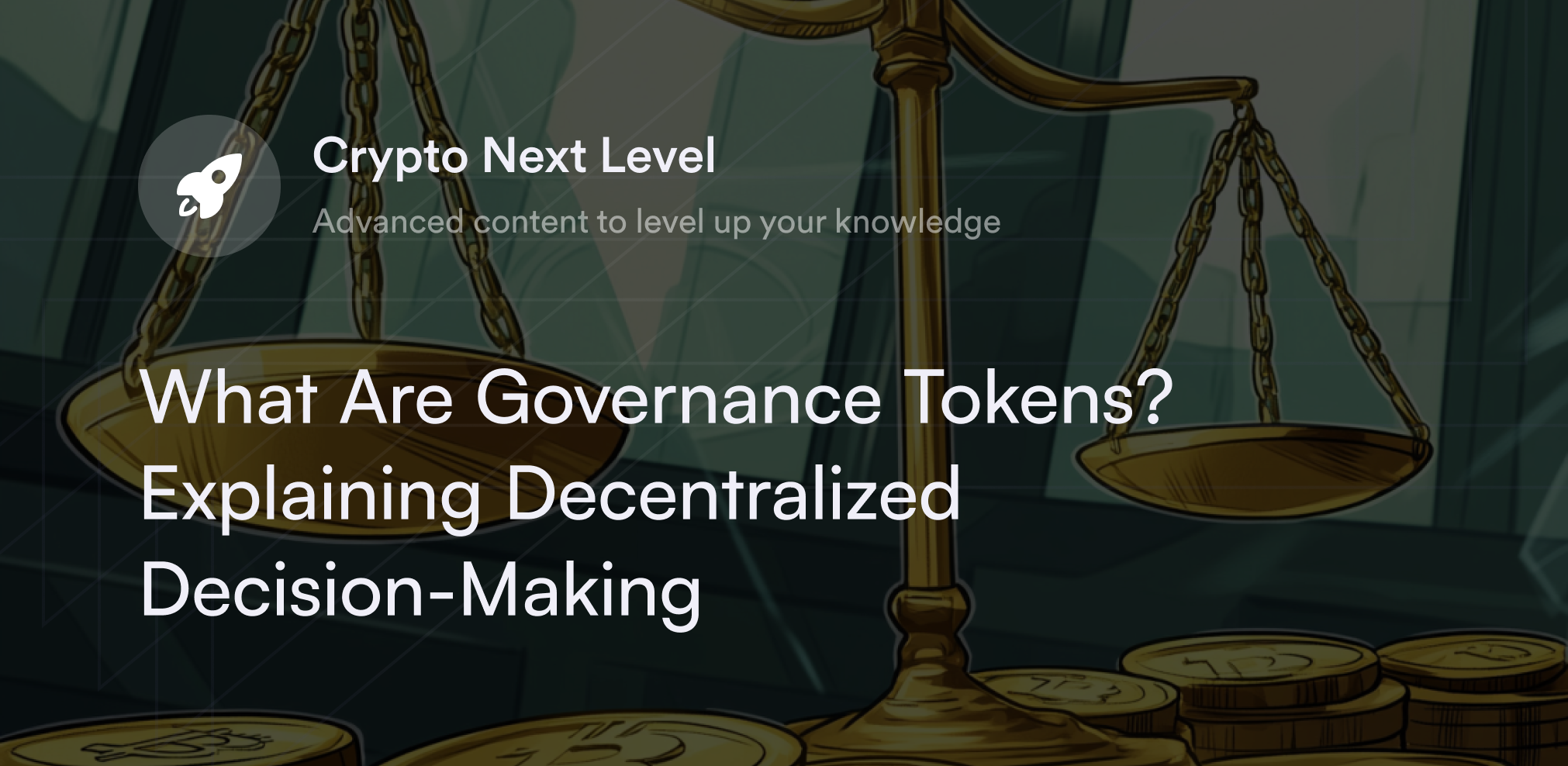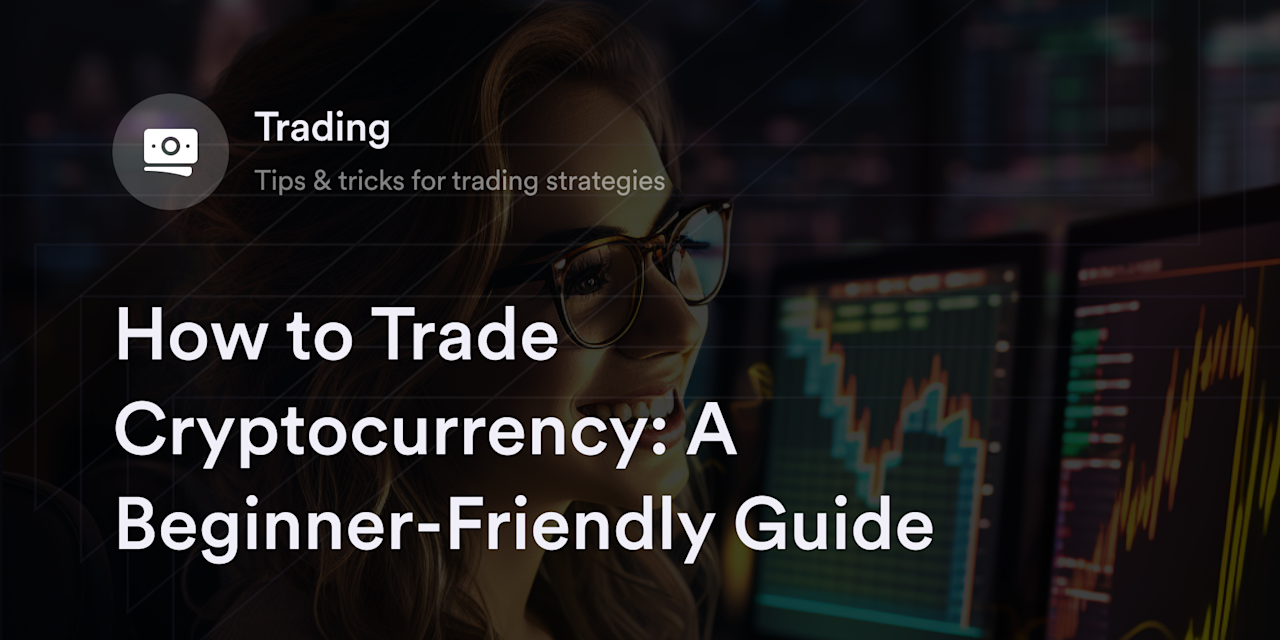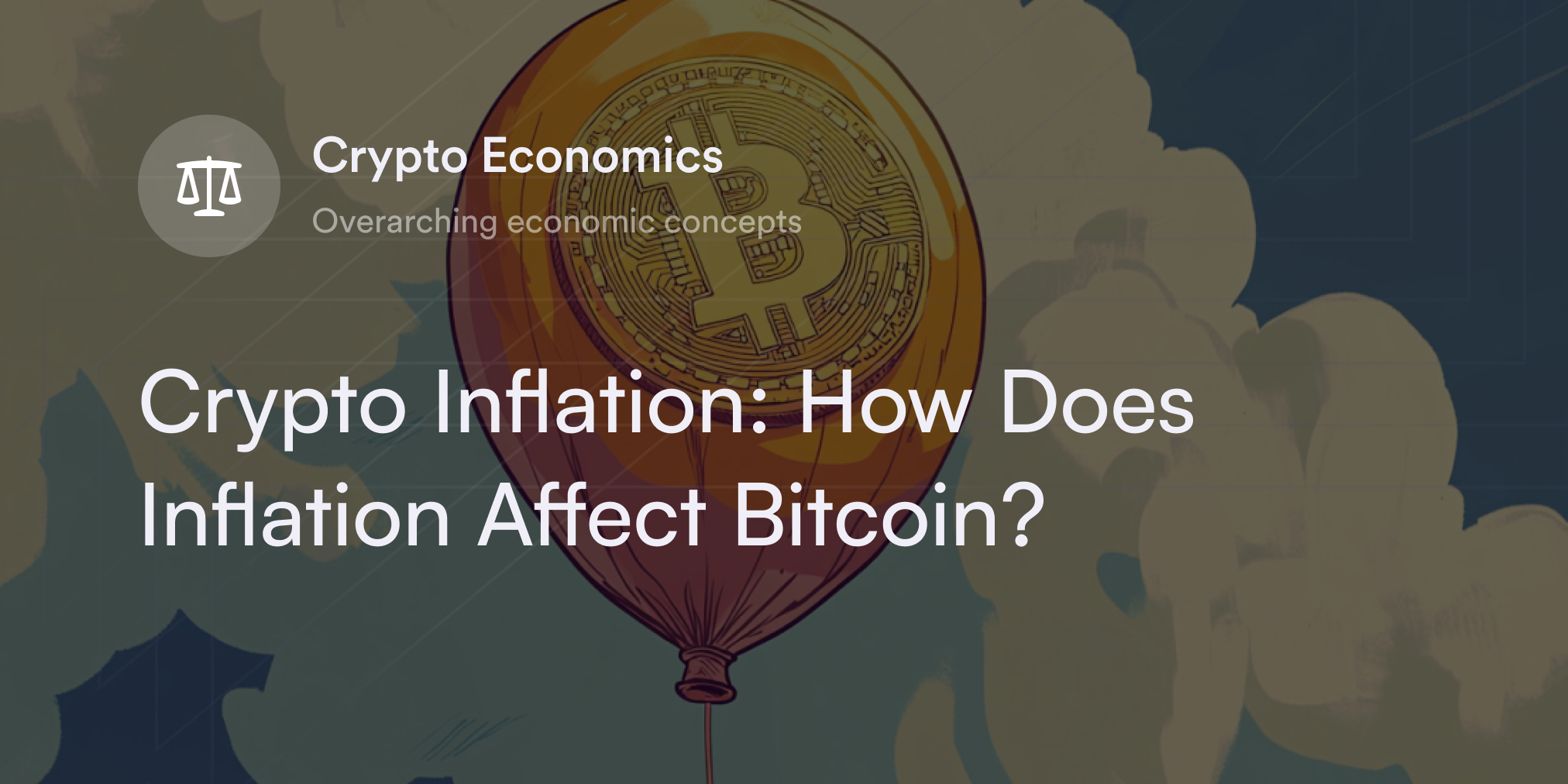
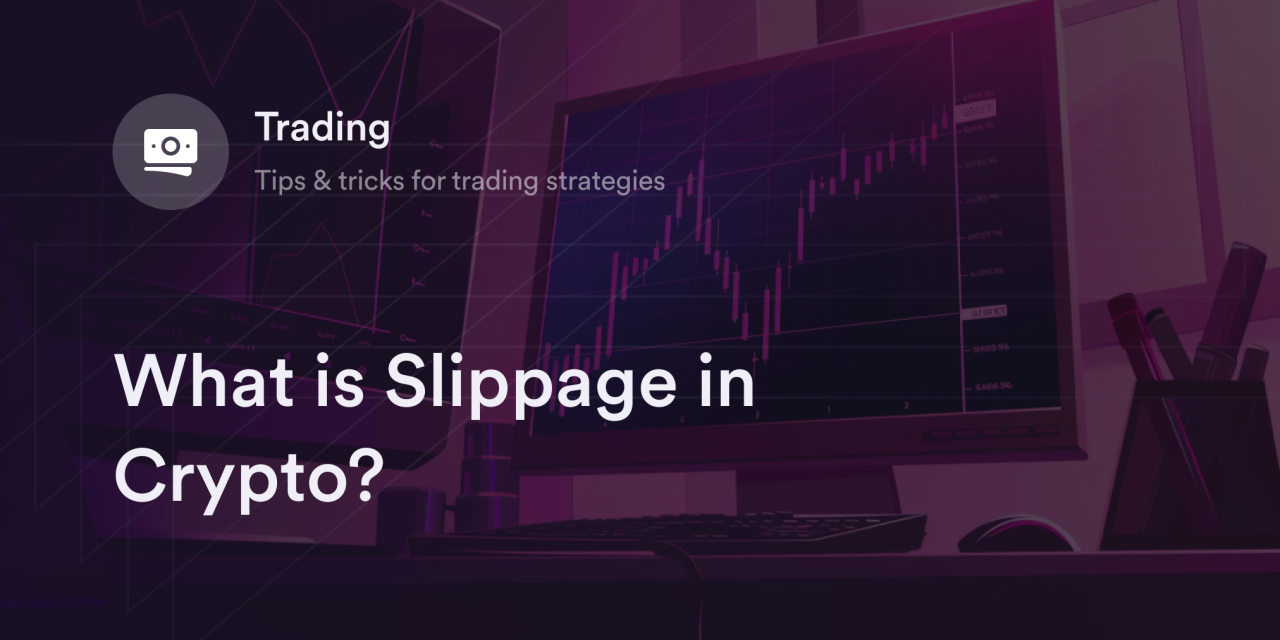

Unlike stocks, bonds, precious metals, and other traditional assets, cryptocurrencies are relatively new, making them a more volatile financial investment, one where swings of 10% in either direction in a single day are common. These price swings can result in closed trades at unintended prices, leading to either profits or losses for traders. When crypto traders pay more or less than the expected price, they experience a phenomenon known as "price slippage."
Due to crypto's price fluctuations, it's difficult to avoid slippage when placing a buy or sell order. There are specific tools, however, to manage the amount of slippage. But what is slippage, exactly?
If you’re an aspiring trader or new to the crypto ecosystem, here’s a few things to know about what crypto slippage is and how to reduce it.
What is Slippage in Crypto?
Slippage is a mismatch between the intended and actual price a trader pays for an asset. It’s either positive or negative, depending on the closing price. During "positive slippage," the trader either spends less to buy or receives more to sell a coin. In "negative slippage," the trader pays more to buy or receives less to sell.
Although price slippage occurs in every financial market, it's closely associated with cryptocurrencies because crypto prices undergo turbulent, hour-by-hour price swings. This is largely a result of microeconomic factors, such as demand-supply and regulations, and macroeconomic events, such as interest rate changes.
What Causes Slippage in the Crypto Market?
One of the primary reasons cryptocurrencies experience slippage is steep and sudden price change, known as “price volatility.” Digital currencies often move multiple percentage points in a matter of minutes, which makes it challenging to gauge a coin’s expected cost in real-time and increases the likelihood of slippage.
Additionally, there are fewer traders in the crypto industry than in other markets. For example, the foreign exchange (forex) market traded daily transactions worth roughly $7.5 trillion in April 2022 alone, while the entire crypto market cap was under $3 trillion even during the 2021 bull run. For context, a bull market is a period where prices are continually rising or expected to rise. Because the crypto space houses a lower number of investors and less capital, significant spikes are more common.
It can also be more challenging to match buyers with sellers in markets for small and obscure altcoins (or non-Bitcoin/Ethereum). For reference, buyer and seller match means connecting buy and sell orders, for the same security, placed at around the same time. The fewer the people interested in a digital asset, the broader the difference between the quoted buy and sell prices—the "bid-ask spread." In finance, a “bid” is the highest buy price, while an “ask” is the lowest sell price. Thinly traded assets with a wide bid-ask spread have greater odds of slippage because there’s a significant difference between buy and sell prices.
What is Slippage Tolerance?
Slippage tolerance—always expressed as a percentage and set by the trader—shows how far an asset could deviate from the expected price before closing. A slippage tolerance of 0.5%, for instance, means a buyer only pays 0.5% more or less than the quoted price for a digital asset. So, if 1 BTC were trading for $20,000, the trader would pay between $19,900 and $20,100 (0.5% x $20,000 = $100). Since an order won’t finalize above or below this threshold, the tolerance percentage helps the trader adjust the slippage they’re comfortable paying.
To mitigate the impact of slippage, crypto exchanges such as dYdX offer slippage tolerance controls, helping traders adjust the slippage they’re willing to pay and make more informed trading decisions.
What is the Slippage Rate?
The ideal slippage rate depends on each trader’s goals and risk tolerance. Although 0.5% is the standard rate on most crypto exchanges, investors should adjust slippage tolerance according to their risk resistance before trading. Remember, a 0.5% slippage tolerance means paying 0.5% more or less than the quoted price.
As an example, let’s say a trader wants to buy 1 Ethereum (ETH) and the quoted price for ETH is $1,500. Let’s also assume their slippage tolerance is set to 5% before executing the trade. Excluding exchange fees, the highest price for 1 ETH is $1,575 (5% x $1,500 = $75). However, 1 ETH could trade for $1,425 if the market declines.
Once a trade finalizes, investors can assess how much slippage they paid as a percentage. They consider both “expected price” and “limit price,” where the former is how much an investor expected to pay for crypto, and the latter was the worst execution price they were willing to pay.
Here’s how they calculate it:
$ amount of slippage / (limit price - expected price) x 100 = percentage slippage
For instance, there’s an order for 1 BTC at $15,000 with a slippage tolerance of 1%, meaning the maximum price for BTC is $15,150 (1% x $15,000 = $150). When the trade closes, the investor pays $15,050 for 1 BTC.
Here’s the slippage calculation for this trade:
$50 / ($15,150 - $15,000) x 100 = 33.33%
This means the investor paid 33.33% of the total possible slippage for BTC.
How Do Traders Minimize Slippage?
Although crypto traders leave themselves at a higher risk for price slippage, there are ways to preserve purchasing power. Here’s how they reduce exposure to slippage:
Set tight slippage tolerance controls: The most straightforward way to manage slippage is to set a desirable tolerance level. Before submitting an order, calculate the worst possible outcome at different percentages to determine the maximum slippage you’re willing to pay.
Use limit orders: A limit order allows traders to set the maximum buy and minimum sell prices. However, market orders automatically fill at the current market rate. So to reduce slippage impact, avoid market orders. In other words, if a crypto’s price wildly fluctuates during a trade, the market order closes regardless. However, limit orders won't finalize until the token hits a price within a predefined range. For example, a limit order for 1 ETH at $1,500 must close at $1,500 or within the acceptable slippage tolerance. While it may take longer for a limit order to clear, it only goes into effect when crypto hits a specific price, benefitting the trader and generating larger potential gains.
Focus on liquid crypto assets: Large-cap cryptos, such as Bitcoin and Ethereum, have the highest trading volume in the crypto market. These coins are more established than other altcoins and are also highly accessible to traders on multiple exchanges. Since there’s a consistently high demand for BTC and ETH, it’s easier to match buyers with sellers, reducing the odds of slippage due to wide bid-ask spreads.
Be careful trading during highly volatile periods: There’s usually less slippage when the crypto market has moderate or low price volatility. Monitor the daily volume levels to check how traders are exchanging tokens. Be aware of slippage risks when trading crypto on days with obvious market catalysts such as significant financial events, economic data releases, or major crypto upgrades.
How Does dYdX Provide a Low-Slippage Trading Experience?
dYdX understands slippage’s impact on crypto markets, especially in the DeFi (decentralized finance) sphere. Although DeFi is growing rapidly, it’s yet to eclipse the trading volume on centralized crypto exchanges (CEXs).
To provide crypto traders with maximum control, dYdX offers dozens of advanced features to set precise price levels. dYdX facilitates access to a custom slippage tolerance tool so users can preset their preferred percentage. Although dYdX defaults to 0.5% slippage for trading, investors can adjust this level to suit their trading strategies. For extra protection, dYdX encourages traders to use limit orders to set their preferred buy or sell price.
Enjoy Increased Liquidity and Reduced Slippage on dYdX
To address slippage concerns in DeFi, dYdX uses a unique hybrid model that incorporates on-chain settlement with an off-chain matching engine. This revolutionary infrastructure lets users access higher liquidity and decreases slippage risk.
Check out our blog to learn more about dYdX and our product. You can also head to our academy to learn more about crypto and trading strategies. While you’re at it, check out our main page to start trading on dYdX today!
Disclaimer
The content of this article (the “Article”) is provided for general informational purposes only. Reference to any specific strategy, technique, product, service, or entity does not constitute an endorsement or recommendation by dYdX Trading Inc., or any affiliate, agent, or representative thereof (“dYdX”). Use of strategies, techniques, products or services referenced in this Article may involve material risks, including the risk of financial losses arising from the volatility, operational loss, or nonconsensual liquidation of digital assets. The content of this Article does not constitute, and should not be considered, construed, or relied upon as, financial advice, legal advice, tax advice, investment advice, or advice of any other nature; and the content of this Article is not an offer, solicitation or call to action to make any investment, or purchase any crypto asset, of any kind. dYdX makes no representation, assurance or guarantee as to the accuracy, completeness, timeliness, suitability, or validity of any information in this Article or any third-party website that may be linked to it. You are solely responsible for conducting independent research, performing due diligence, and/or seeking advice from a professional advisor prior to taking any financial, tax, legal, or investment action.
You may only use the dYdX Services in compliance with the dYdX Terms of Use available here, including the geographic restrictions therein.
Any applicable sponsorship in connection with this Article will be disclosed, and any reference to a sponsor in this Article is for disclosure purposes, or informational in nature, and in any event is not a call to action to make an investment, acquire a service or product, or purchase crypto assets. This Article does not offer the purchase or sale of any financial instruments or related services.
By accessing this Article and taking any action in connection with the information contained in this Article, you agree that dYdX is not responsible, directly or indirectly, for any errors, omissions, or delays related to this Article, or any damage, injury, or loss incurred in connection with use of or reliance on the content of this Article, including any specific strategy, technique, product, service, or entity that may be referenced in the Article.


